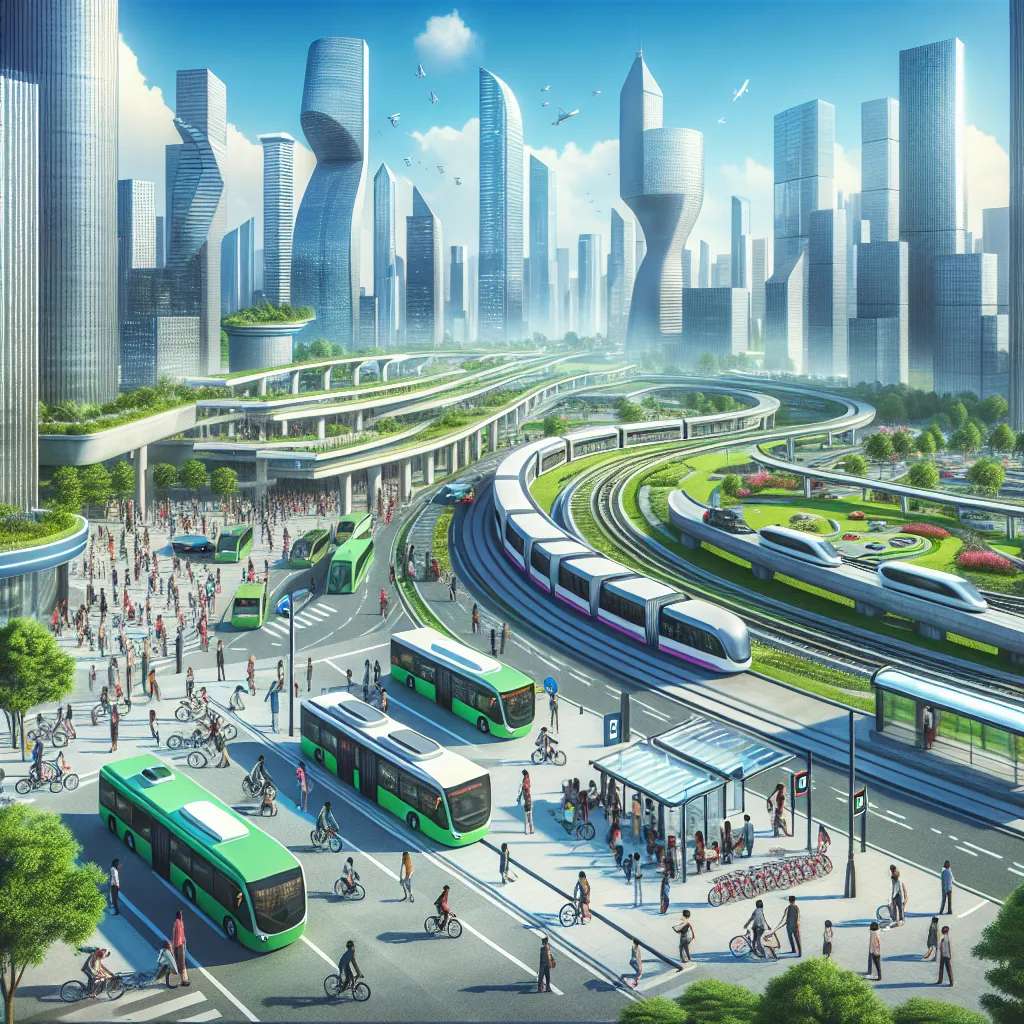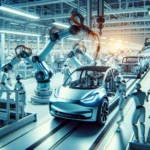Welcome to our IELTS Reading practice session focused on the topic “How Urbanization is Influencing Transportation Systems.” As an experienced IELTS instructor, I’ve prepared a comprehensive reading test that mimics the actual IELTS exam structure. This practice will help you understand the impact of urbanization on transportation while honing your reading skills for the IELTS test.
 Urban Transportation Systems
Urban Transportation Systems
Introduction to the IELTS Reading Test
The IELTS Reading test consists of three passages of increasing difficulty. Each passage is followed by a set of questions designed to assess your comprehension, analytical skills, and ability to locate specific information. Let’s dive into our practice test on urbanization and transportation systems.
Passage 1 (Easy Text): The Evolution of Urban Transportation
As cities grow and evolve, so do their transportation needs. The rapid urbanization witnessed in recent decades has led to significant changes in how people move within urban areas. From the early days of horse-drawn carriages to the modern era of electric vehicles and smart traffic systems, urban transportation has undergone a remarkable transformation.
One of the most notable shifts has been the move towards sustainable mobility. With growing concerns about air pollution and climate change, many cities are investing in eco-friendly transportation options. Electric buses, bicycle-sharing programs, and improved pedestrian infrastructure are becoming increasingly common sights in urban landscapes around the world.
The rise of digital technology has also played a crucial role in reshaping urban transportation. Smart traffic management systems use real-time data to optimize traffic flow, reducing congestion and improving travel times. Mobile apps have revolutionized how people plan their journeys, providing instant access to public transportation schedules, ride-sharing services, and navigation assistance.
However, the challenges of urban transportation remain significant. As cities continue to expand, the strain on existing infrastructure grows. Many urban areas struggle with overcrowded public transport, traffic congestion, and the need to accommodate an ever-increasing number of vehicles. These issues have spurred innovation in urban planning and transportation design, leading to the development of integrated transportation networks that aim to seamlessly connect various modes of travel.
The future of urban transportation looks promising, with emerging technologies like autonomous vehicles and hyperloop systems on the horizon. These innovations have the potential to further transform how we move within cities, offering faster, safer, and more efficient travel options. As urbanization continues to shape our world, the evolution of transportation systems will undoubtedly play a crucial role in creating sustainable, livable cities for generations to come.
Questions 1-5: Multiple Choice
Choose the correct letter, A, B, C, or D.
-
What is described as a significant shift in urban transportation?
A) The introduction of horse-drawn carriages
B) The move towards sustainable mobility
C) The decline of public transportation
D) The increase in private car ownership -
According to the passage, what is one of the main drivers for eco-friendly transportation options?
A) Economic growth
B) Population decrease
C) Concerns about air pollution and climate change
D) Preference for luxury travel -
How has digital technology impacted urban transportation?
A) By eliminating the need for public transportation
B) By increasing traffic congestion
C) By optimizing traffic flow through smart management systems
D) By reducing the number of vehicles on the road -
What is mentioned as a challenge faced by many urban areas?
A) Lack of digital technology
B) Overcrowded public transport
C) Excess of bicycle-sharing programs
D) Shortage of private vehicles -
Which of the following is NOT mentioned as a potential future development in urban transportation?
A) Autonomous vehicles
B) Hyperloop systems
C) Flying cars
D) Integrated transportation networks
Questions 6-10: True/False/Not Given
Do the following statements agree with the information given in the passage?
Write
TRUE if the statement agrees with the information
FALSE if the statement contradicts the information
NOT GIVEN if there is no information on this
- Electric buses are becoming more common in urban areas.
- Mobile apps have made it more difficult for people to plan their journeys.
- The expansion of cities has led to a decrease in the strain on existing infrastructure.
- Autonomous vehicles are currently the primary mode of transportation in most cities.
- The evolution of transportation systems is crucial for creating sustainable cities.
Passage 2 (Medium Text): The Impact of Urbanization on Public Transportation
The rapid urbanization of the past century has fundamentally altered the landscape of public transportation. As cities have grown in both population and physical size, the demands on public transit systems have increased exponentially. This growth has necessitated a radical rethinking of how we move people efficiently and sustainably within urban environments.
One of the most significant impacts of urbanization on public transportation has been the need for expanded coverage. As cities sprawl outwards, transit networks must extend their reach to serve new residential and commercial areas. This expansion often comes with substantial financial and logistical challenges, requiring significant investment in infrastructure and careful planning to ensure effective service delivery.
The increased population density in urban cores has also put immense pressure on existing public transportation systems. Overcrowding during peak hours has become a common issue in many major cities, leading to discomfort for passengers and potential safety concerns. To address this, many cities have invested in high-capacity transit options such as metro systems, bus rapid transit (BRT), and light rail. These modes of transportation can move large numbers of people quickly and efficiently, helping to alleviate congestion on roads and reduce travel times.
Urbanization has also driven innovation in public transportation technology and design. The need for more efficient and environmentally friendly transit options has led to the development of electric and hybrid vehicles for public transportation fleets. Many cities are now operating electric buses and trains, significantly reducing their carbon footprint and improving air quality in urban areas.
The rise of smart city technologies has further transformed public transportation in urban areas. Integrated ticketing systems, real-time arrival information, and mobile apps that allow for seamless journey planning have enhanced the user experience and made public transit more attractive to a wider range of commuters. These technological advancements have also enabled transit authorities to optimize routes and schedules based on real-time demand, improving overall system efficiency.
However, the impact of urbanization on public transportation is not without its challenges. The rapid pace of urban growth often outstrips the ability of cities to develop adequate public transit infrastructure. This can lead to a reliance on private vehicles, exacerbating traffic congestion and air pollution. Additionally, the high cost of developing and maintaining extensive public transportation networks can strain municipal budgets, particularly in developing countries experiencing rapid urbanization.
The social equity aspect of public transportation in urbanizing areas is also a critical consideration. As cities expand, there is a risk of creating transit deserts – areas with limited access to public transportation. This can disproportionately affect lower-income communities, potentially exacerbating social and economic inequalities. Ensuring equitable access to public transportation is therefore a key challenge for urban planners and policymakers.
Looking to the future, the continued trend of urbanization will likely drive further evolution in public transportation systems. Emerging technologies such as autonomous vehicles and on-demand transit services have the potential to revolutionize urban mobility. These innovations, combined with ongoing efforts to create more sustainable and inclusive cities, will shape the future of public transportation in our increasingly urbanized world.
Questions 11-16: Matching Headings
Match the following headings to the correct paragraphs in the passage. Write the correct number i-x next to questions 11-16.
List of Headings:
i. Financial strains on developing cities
ii. The need for wider transit networks
iii. Technological advancements in transit systems
iv. The challenge of overcrowding
v. Future trends in urban public transportation
vi. The rise of electric public vehicles
vii. Social implications of urban transit development
viii. Smart solutions for better commuting
ix. The struggle to keep pace with urban growth
x. Innovations driven by urban density
- Paragraph 2: __
- Paragraph 3: __
- Paragraph 4: __
- Paragraph 5: __
- Paragraph 6: __
- Paragraph 7: __
Questions 17-20: Sentence Completion
Complete the sentences below. Choose NO MORE THAN TWO WORDS from the passage for each answer.
- To address overcrowding, many cities have invested in __ __ transit options.
- The development of __ and __ vehicles has helped reduce the carbon footprint of public transportation.
- Smart city technologies have enabled transit authorities to optimize routes based on __ __.
- Areas with limited access to public transportation are referred to as __ __.
Passage 3 (Hard Text): Reimagining Urban Mobility: The Intersection of Urbanization and Transportation Innovation
The inexorable march of urbanization has precipitated a paradigm shift in the conceptualization and implementation of transportation systems worldwide. As metropolitan areas burgeon, both in terms of population density and geographical expanse, the exigencies of urban mobility have catalyzed a wave of innovation that is reshaping the very fabric of our cities. This transformation is not merely a matter of technological advancement; it represents a fundamental reimagining of the relationship between urban spaces and the modalities of human movement within them.
At the vanguard of this revolution is the concept of integrated mobility ecosystems. This holistic approach transcends the traditional siloed view of transportation modes, instead envisioning a seamlessly interconnected network that encompasses public transit, shared mobility services, micromobility options, and even pedestrian and cycling infrastructure. The advent of Mobility as a Service (MaaS) platforms epitomizes this paradigm, offering users a unified interface through which to plan, book, and pay for multimodal journeys. This integration not only enhances user convenience but also optimizes the utilization of existing transportation resources, mitigating the strain on urban infrastructure.
The proliferation of data-driven decision-making in urban transportation planning has engendered a new era of adaptive and responsive systems. Big data analytics, coupled with artificial intelligence and machine learning algorithms, are enabling cities to predict traffic patterns, optimize public transit routes in real-time, and even anticipate maintenance needs before they become critical issues. This predictive capacity allows for more efficient allocation of resources and a more resilient transportation network capable of adapting to the dynamic needs of an urban populace.
The electrification of urban transport represents another pivotal trend at the nexus of urbanization and transportation innovation. As cities grapple with the dual challenges of air pollution and greenhouse gas emissions, the transition to electric vehicles (EVs) in public transit fleets, alongside the development of robust charging infrastructure, has emerged as a key strategy. This shift not only addresses environmental concerns but also opens up new possibilities for vehicle-to-grid (V2G) technologies, potentially transforming EVs into mobile energy storage units that can support urban power grids.
The concept of the “15-minute city” has gained traction as a model for urban development that intrinsically links transportation and land use planning. This approach aims to create urban environments where all essential services and amenities are accessible within a 15-minute walk or bicycle ride, reducing the need for long-distance travel and fostering more sustainable, community-centric urban spaces. The implementation of this model necessitates a recalibration of urban transportation priorities, with a greater emphasis on active transportation modes and localized public transit solutions.
The rise of autonomous vehicles (AVs) presents both opportunities and challenges for urban transportation systems. While AVs promise to enhance safety, improve traffic flow, and provide mobility options for those unable to drive, their integration into existing urban fabrics raises complex questions about infrastructure adaptation, regulatory frameworks, and the potential for increased vehicle miles traveled. The concept of shared autonomous vehicles (SAVs) has emerged as a potential solution, offering the benefits of AV technology while mitigating concerns about increased congestion and urban sprawl.
As urbanization continues to reshape our world, the imperative for sustainable, efficient, and equitable transportation systems has never been more pressing. The convergence of smart city technologies, sustainable urban planning principles, and innovative mobility solutions is giving rise to a new vision of urban transportation—one that is not merely about moving people from point A to point B, but about creating livable, vibrant, and resilient urban environments.
The challenges ahead are formidable. Issues of digital divide, data privacy, and equitable access to new mobility technologies must be addressed to ensure that the benefits of transportation innovation are distributed fairly across urban populations. Moreover, the integration of legacy infrastructure with cutting-edge technologies presents significant technical and financial hurdles.
Nonetheless, the trajectory of urban transportation innovation offers cause for optimism. As cities continue to serve as crucibles of innovation and human ingenuity, the ongoing dialogue between urbanization and transportation promises to yield solutions that not only meet the mobility needs of growing urban populations but also contribute to the creation of more sustainable, livable, and resilient cities for generations to come.
Questions 21-25: Matching Information
Match the following statements (A-H) to the correct paragraphs in the passage (21-25). Write the correct letter A-H next to questions 21-25.
A) The concept of creating urban areas where all necessities are within walking or cycling distance.
B) The use of electric vehicles as potential support for urban power systems.
C) The challenges of integrating new transportation technologies equitably across urban populations.
D) The shift towards viewing transportation as an interconnected ecosystem rather than separate modes.
E) The potential impact of self-driving vehicles on urban transportation and infrastructure.
F) The use of advanced analytics to predict and optimize urban transportation systems.
G) The environmental benefits of transitioning to electric public transportation.
H) The need for adapting existing infrastructure to accommodate new transportation technologies.
- Paragraph 2: __
- Paragraph 3: __
- Paragraph 4: __
- Paragraph 5: __
- Paragraph 6: __
Questions 26-30: Summary Completion
Complete the summary below. Choose NO MORE THAN TWO WORDS from the passage for each answer.
The impact of urbanization on transportation systems has led to significant innovations in urban mobility. One key concept is the development of (26) __ __ ecosystems, which integrate various modes of transport. This is facilitated by platforms offering (27) __ __ __, allowing users to plan and pay for multi-modal journeys easily. The use of (28) __ __ in transportation planning has enabled more efficient and adaptive systems. Environmental concerns have driven the (29) __ __ __ transport, which not only reduces emissions but also offers potential for supporting urban power grids. The vision of a (30) __ city aims to reduce long-distance travel by making essential services accessible within a short walk or bike ride.
Answer Key
Passage 1:
- B
- C
- C
- B
- C
- TRUE
- FALSE
- FALSE
- NOT GIVEN
- TRUE
Passage 2:
- ii
- iv
- vi
- viii
- ix
- vii
- high-capacity
- electric, hybrid
- real-time demand
- transit deserts
Passage 3:
- D
- F
- B
- A
- E
- integrated mobility
- Mobility as Service
- big data
- electrification of urban
- 15-minute
By practicing with these passages and questions, you’ll enhance your understanding of how urbanization influences transportation systems while improving your IELTS Reading skills. Remember to manage your time effectively during the actual test and to read the passages and questions carefully. For more IELTS practice and tips, check out our articles on the impact of urbanization on public transportation systems and how electric vehicles are shaping the future of transportation.


